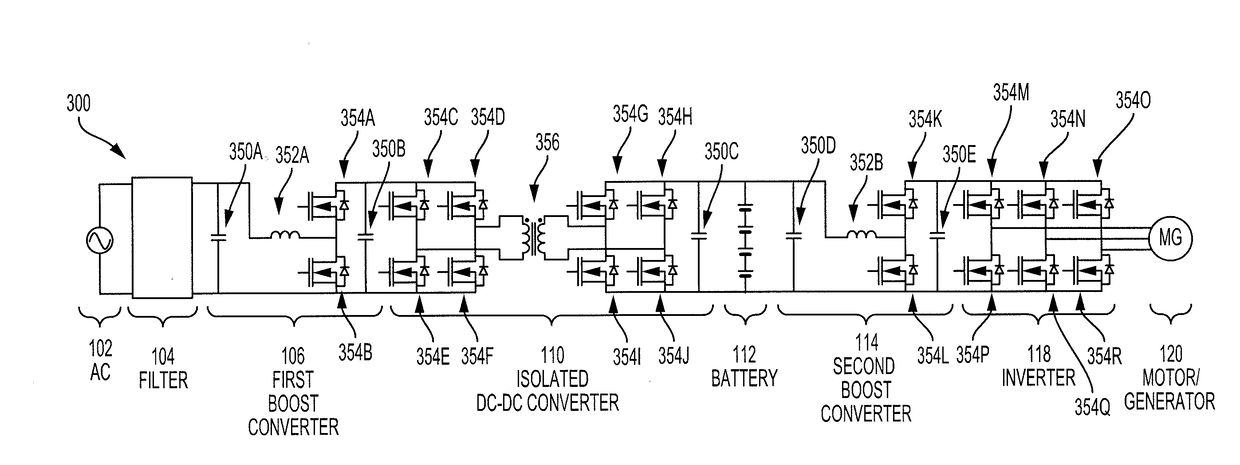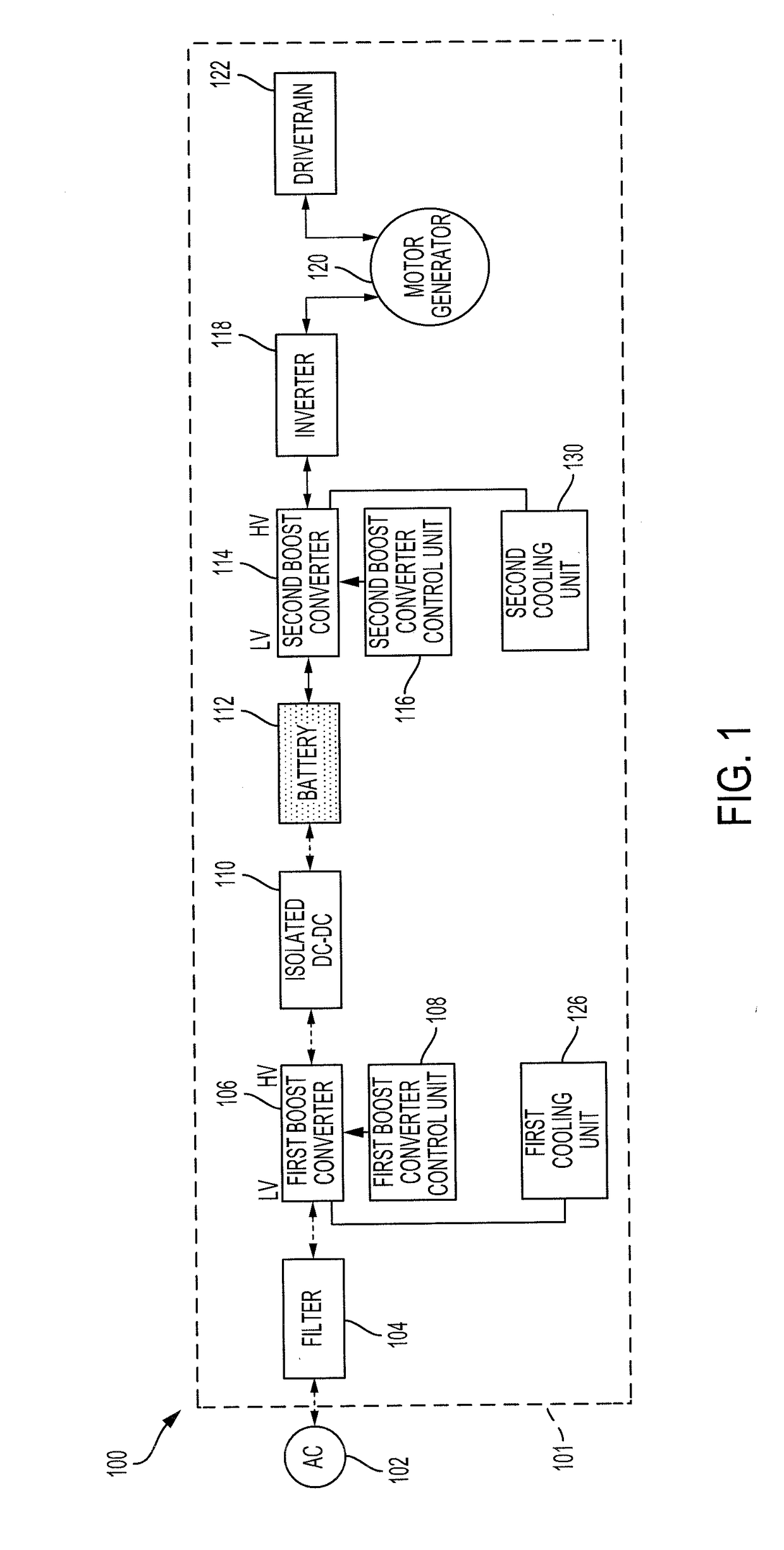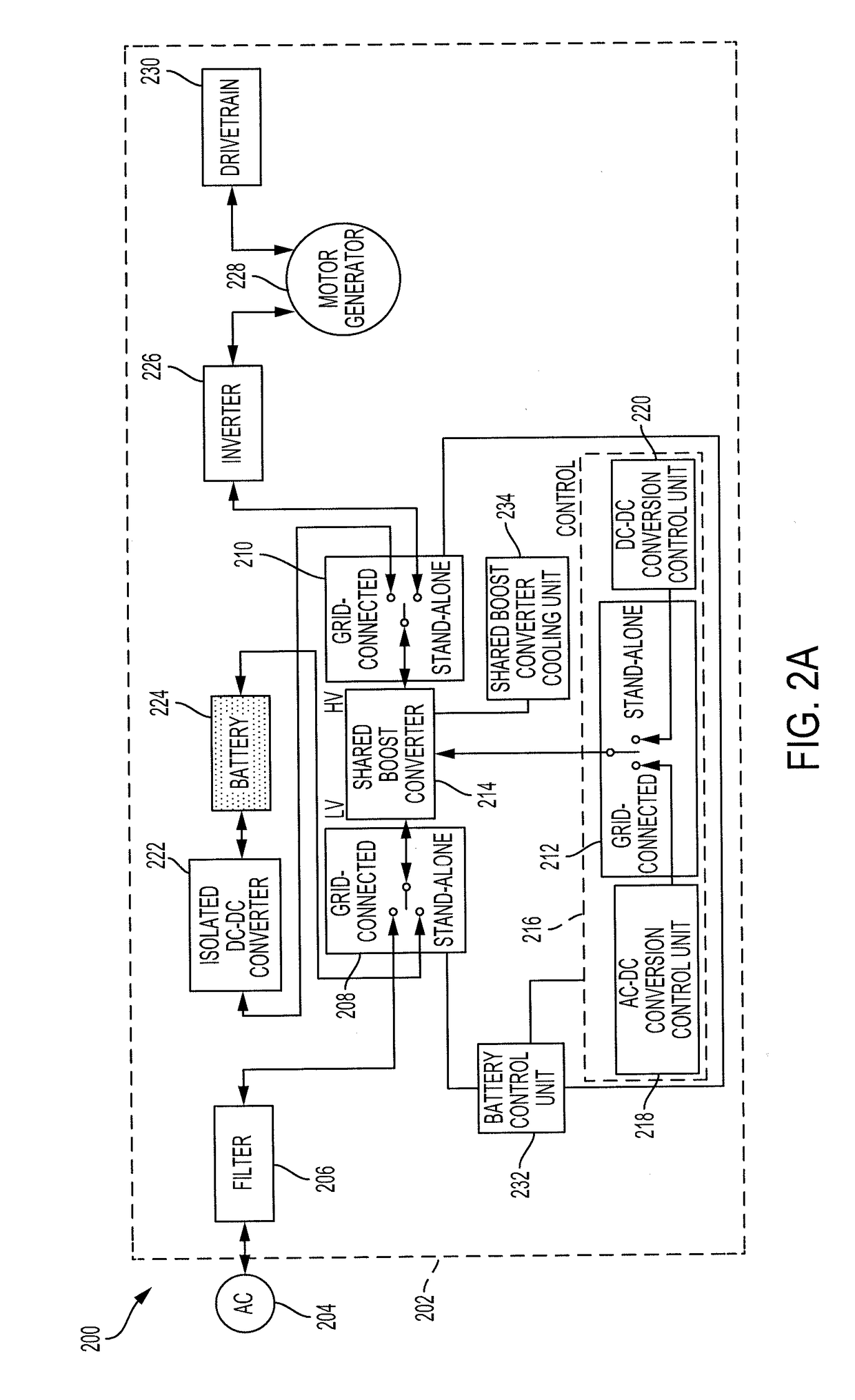Electric vehicle power system with shared converter
a technology of electric vehicles and converters, applied in the direction of dynamo-electric converter control, process and machine control, instruments, etc., can solve the problems of increasing equipment malfunctions or failures, occupying more space than necessary, and adding weight, so as to facilitate battery charging and facilitate battery discharging. , the effect of facilitating the battery charging
- Summary
- Abstract
- Description
- Claims
- Application Information
AI Technical Summary
Benefits of technology
Problems solved by technology
Method used
Image
Examples
Embodiment Construction
[0014]Disclosed herein are systems, vehicles and methods for charging and discharging a battery of an electric vehicle in a grid-connected mode or in a stand-alone mode. Power conversion systems for electric vehicles may operate in one of two modes, a grid-connected mode or a stand-alone mode. When in the grid-connected mode, the electric vehicle may be stationary and connected to a power source. In the grid-connected mode, the electric vehicle may receive power from the power source, such as an electrical outlet, and store the power in a battery. In the grid-connected mode, the electric vehicle may also provide excess power stored in the battery to the power source.
[0015]When in the stand-alone mode, the electric vehicle may not be connected to the power source and may be turned on or in an operational state. In the stand-alone mode, the power stored in the battery may be used to power the electric vehicle, including a motor / generator for propelling the electric vehicle, or to powe...
PUM
 Login to View More
Login to View More Abstract
Description
Claims
Application Information
 Login to View More
Login to View More - R&D
- Intellectual Property
- Life Sciences
- Materials
- Tech Scout
- Unparalleled Data Quality
- Higher Quality Content
- 60% Fewer Hallucinations
Browse by: Latest US Patents, China's latest patents, Technical Efficacy Thesaurus, Application Domain, Technology Topic, Popular Technical Reports.
© 2025 PatSnap. All rights reserved.Legal|Privacy policy|Modern Slavery Act Transparency Statement|Sitemap|About US| Contact US: help@patsnap.com



